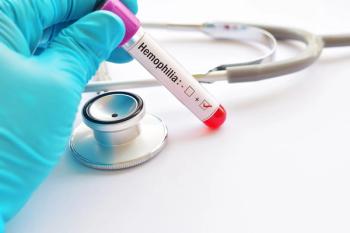
Caregivers to blame for half of kids poisoned by prescription medications
A new study indicates that pediatric exposures to prescription medications are just as often the result of adults removing pills from original containers as improper use or failure of child-resistant packaging.
A new
During 7 months in 2017, 5
Results
Participants were asked contextually directed questions about the exposure circumstances. Among the 4496 participants, 71.6% of SDM exposures involved children aged ≤2 years; 33.8% involved only prescription medications; 32.8% involved only over-the-counter (OTC) products requiring child-resistant packaging; and 29.9% consisted of OTC products not requiring child-resistant packaging.
More than half (51.5%) of prescription drug exposures occurred in children accessing medication that had been previously removed from its original packaging, compared to 20.8% of exposures involving OTC products (adjusted odds ratio [aOR], 3.39; 95% confidence interval [CI], 2.87-4.00).
Medications for attention-deficit/hyperactivity disorder (49.3%) and opioids (42.6%) frequently were not in any container when accessed by the child. Cardiovascular/antithrombotic agents (30.8%), hypoglycemic agents (33.8%), and anticonvulsants (41.1%) often were transferred to other containers. Grandparents’ medications were involved in 30.7% of prescription exposures and 7.8% of OTC exposures (aOR, 3.99; 95% CI, 3.26-4.87).
Changes needed
The study’s findings suggest that pediatric exposures to prescription medications are just as often the result of adults removing medications from original containers as improper use or failure of child-resistant packaging. Researchers noted that to prevent many - if not most - prescription medication exposures, a new paradigm may be required that focuses on encouraging adults to store all medications in a child-resistant container until the moment that drug is consumed. The researchers also noted that unit-dose packaging has been linked to lower dose exposures and if implemented broadly could lead to further reductions.
The study’s findings also suggest the importance of targeting educational campaign messages to grandparents, in addition to parents of young children.
Potential limitations of this study include generalizability and several types of reporting bias, including:
- Only exposures resulting in calls to participating poison centers were included.
- There may be a nonresponse bias because callers from health care settings were less likely to participate. Also, calls for serious exposures may be more likely to come from health care settings, so these exposures may be under-represented.
- Data were self-reported by caregivers, who may have been more likely to report that medications were accessed from original containers when they had not been.
References:
1. Agarwal M, Lovegrove MC, Geller RJ, et al. Circumstances involved in unsupervised solid dose medication exposures among young children. J Pediatr. January 28, 2020. Epub ahead of print.
Newsletter
Access practical, evidence-based guidance to support better care for our youngest patients. Join our email list for the latest clinical updates.











